This post is part of the Crossley ID Guide Britain & Ireland Blog Tour — yesterday the tour was over at Mark Avery’s blog here — tomorrow it moves on to BirdWords… the official site of Dominic Couzens… who’s one of the book’s authors. You’ll find the full tour schedule here.
NB. I’ll be posting a full review of the guide to the book review section of the site in due course…
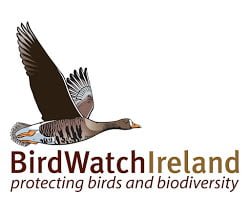 Every winter Birdwatch Ireland, our largest conservation charity, calls on the public to help them keep track of how Ireland’s garden birds are faring. The annual Garden Bird Survey is Ireland’s most popular Citizen Science project, and takes place between December and February each year. Participants simply keep a tally of the highest count of each individual species visiting their garden each week, then submit their results either online or by printing off and posting in a results form at the end of the survey period.
Every winter Birdwatch Ireland, our largest conservation charity, calls on the public to help them keep track of how Ireland’s garden birds are faring. The annual Garden Bird Survey is Ireland’s most popular Citizen Science project, and takes place between December and February each year. Participants simply keep a tally of the highest count of each individual species visiting their garden each week, then submit their results either online or by printing off and posting in a results form at the end of the survey period.
The 2013 / 14 survey kicks off on Monday 02 December, and runs until the end of February. Youll find all the details you need to take part on the Birdwatch Ireland website here, and will find links to the results of previous surveys (as PDF files) on the same page.
It’s a fantastic way to get to know your garden birds a bit better, and get involved in a bit if citizen science to boot. Collectively the data you contribute as part of the survey helps to highlights potential conservation issues, and allows Birdwatch Ireland make informed decisions about how best to address them. It’s also great fun, and anyone can take part — all you need is a garden (or access to one), a keen eye and a willingness to participate.
 Another prerequisite of course is being able to identify the birds you see visiting your garden. Garden birds tend to be where most birders cut their “bird ID” teeth. Birdwatch Ireland has a section of their website that will help with common garden bird species, but it’s always a good idea to have a field guide handy for reference.
Another prerequisite of course is being able to identify the birds you see visiting your garden. Garden birds tend to be where most birders cut their “bird ID” teeth. Birdwatch Ireland has a section of their website that will help with common garden bird species, but it’s always a good idea to have a field guide handy for reference.
The new Crossley ID Guide Britain and Ireland, by Richard Crossley and Dominic Couzens, published this month by Princeton University Press, fits the bill nicely. It’s a bit different to your run-of-the-mill field guide in that it uses multiple photos for each bird species, rather than the more common illustrations or single photos you get in many guides. Each page shows birds in various positions and behaviours as you’re likely to see them in the field, and that can be a big help when it comes to identifying a bird you don’t recognise in your garden (or indeed anywhere else… but we’re talking about gardens here).
The guide is aimed at beginners to intermediate birders… which means its designed to be easy to use for people who aren’t necessarily all that familiar with birds or with field guides. That makes it particularly suitable if you’re keen to get to know the birds in your garden better, and perhaps take your bird ID adventure to the next level.
Here’s a page from the book showing the greenfinch, a bird that’s a regular visitor to many Irish gardens over the winter months, and one you’re likely to record if you take part in the Garden Bird Survey.

Many people who feed birds in their gardens regularly will of course already be familiar with most of the common garden visitors. Blue tits, great tits, robins and blackbirds will present few ID challenges… but there is always the chance of getting more unusual visitors as the winter progresses. Birds like long tailed tits, for example, are getting increasingly comfortable visiting garden feeders, and while I haven’t had them at the feeders in my garden yet, I’m sure it’s only a matter of time.
Another bird to look out for at peanut feeders, if you’re near the east coast in Co. Wicklow, is the Great Spotted Woodpecker, a recently arrived coloniser from Britain, now established as a breeding bird in Ireland.
Then of course there are the scarce winter visitors… and recent years have seen good numbers of them arrive in Ireland over the winter. Birds like the Brambling — a finch very like our familiar chaffinch that arrives in Ireland in variable numbers (depending on things like weather and food availability on the continent) from November to March. It’s well worth keeping an eye out for brambling amongst flocks of finches in and around your garden in winter — especially in amongst flocks of chaffinches.
And then there’s perhaps the most exotic of all our winter visitors… the bohemian waxwing. Waxwings, like bramblings, turn up in varying numbers in winter — but unlike brambling, which tend to favour rural locations, waxwings are urbanites. If your garden is in a town or city, and you have lots of berry laden trees and shrubs, then keep your eyes peeled for this exciting bird.
With a good field guide at the ready you’ll be all set to identify any bird you don’t recognise that arrives in your garden this winter… and when you do, don’t forget to make a note and record it for your Birdwatch Ireland Garden Bird Survey. Your contribution really does make a difference.
Don’t forget to check out tomorrow’s blog tour post here… yesterday’s post here… and the full blog tour schedule here. There’s also a competition to win a signed copy of the book, and the tour closes with a live video chat with the authors on Thursday 21 November.
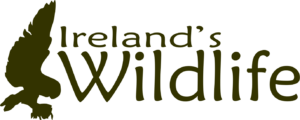




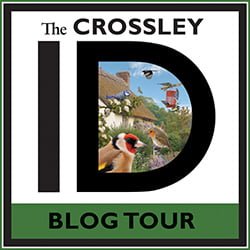


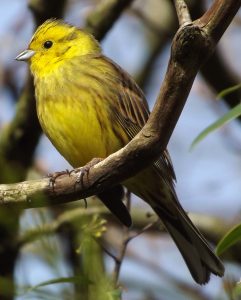
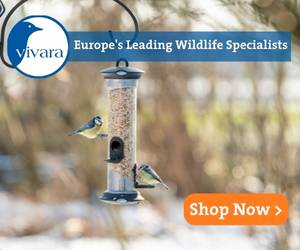




6 comments
Laurence Murphy
Hi, I’m recently retired and now notice how many small birds we have in our garden in rural Tipperary. I’m familiar with some as my brother is an accomplished artist and I’ve recognized many of the birds from his color drawings. During winter we feed the little ones with fat balls of grains. We get a variety of Tits, Finches, Pied Wagtails, Sparrows, Blackbirds and a little shy Wren. This spring and summer we’ve hosted dirty little Housemartins (my shed is ruined). A pair of Goldcrests come by early mornings. The Robins are chasing their young away as are some of the Finches, it appears they want their young to establish their own feeding areas. All the crows, Hooded, Jackdaws and their squeaking. Most of all the sparrows, they take such time feeding and nurturing their young and they all get along in big groups, oh! The wonders of creation. Now I understand ‘who feeds the birds’?
mark troy
A linnet is now feeding with all the finches not every day I see it but at first thought it might be a male red poll. Happy days
mark troy
Brambling not been seen for a few days but have noticed half a dozen red polls feeding on the ground beneath the Niger seed feeders
mark troy
Brambling in my garden today 2/3/18 along with charge, goldfinches and green finches
Jimmy dunne
Hi . I live in Dunboyne co Meath. Since around June 2017 I have noticed a big decline in the garden birds visiting my garden. I used to have visits from finches,tits, doves, wrens,robins, starlings,etc, but now I don’t see any of these around although i still leave out food which I change regularly and water. Would you have any suggestions?
FrankMartin
Hi, just an enquiry. I have a hen sparrow coming to my garden once an hour or so to pick off bees coming out of a cavity in my garden.It has 2 pink rings on its feet .Is this part of a survey ? [email protected]